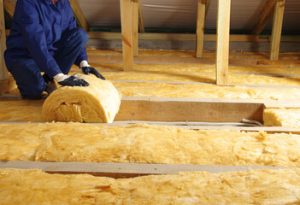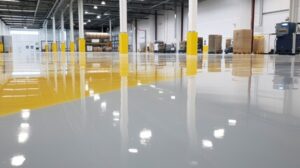
Insulation Removal is necessary when a home’s existing insulation is damaged or compromised by water leaks, pests, mold, or structural damage. Removing old insulation allows for new, more effective insulation to be installed and improves the energy efficiency and comfort of a home.
Proper preparation is essential for a successful Perth Insulation Removal project. The specific type of insulation must be identified and the right tools should be used to minimize health risks.
1. Energy Efficiency
Insulation provides a crucial function in the home by regulating the temperature, keeping heat in during the winter and preventing heat from escaping during the summer. However, over time, insulation can become damaged or compromised by factors like pest infestation, water damage, and even general wear and tear. This damages the effectiveness of insulation, which causes it to lose its R-value and subsequently increases energy bills.
By removing old, outdated, or damaged insulation and replacing it with new high-performance cellulose insulation, homeowners can significantly reduce energy consumption and associated costs. This also leads to lower greenhouse gas emissions by reducing reliance on fossil fuels and creating a more comfortable living space with better air quality.
Insulation is one of the most cost-effective and environmentally-friendly upgrades you can make to your home or commercial building. However, it’s important to start with a clean slate when making upgrades. Insulation removal and replacement services allow you to maximize the impact of other energy efficiency improvements, such as air sealing, radiant barriers, and HVAC system upgrades.
In addition to increasing energy bills, damaged or old insulation can harbor mold and mildew. These fungi release spores into the air which can cause respiratory issues and exasperate allergies and asthma. By removing insulation that is infested with mold and mildew and replacing it with new, clean insulation materials, homeowners can enjoy healthier, more comfortable indoor spaces.
Proper insulation removal requires a number of tools and safety precautions. It’s essential to contact professional insulation removal professionals who have experience working with different types of materials and navigating complex access points and tight spaces. They will use specialized equipment to suck out loose fill or batt insulation, which is quick and effective, and they will ensure that any contaminants are removed from the work area and disposed of properly.
2. Reduced Noise
Insulation removal requires a certain level of skill and should only be done by professionals. It is a demanding DIY project that requires adherence to strict safety guidelines and precautions. If not done properly, improper insulation removal can lead to mold, mildew, pest infestations, and compromised indoor air quality.
The benefits of having your old insulation removed by a professional go beyond just addressing these common issues. It also helps to reduce noises in the house, and can help increase the comfort of your home overall. This is because a well-insulated home provides reduced outside noises and can improve the indoor sound levels.
Old insulation can also provide a nesting ground for rodents, which can chew through it and compromise energy efficiency. When animals leave their droppings in the insulation, they create a noxious smell that can be difficult to eliminate. This is why it’s important to get rid of old and contaminated insulation regularly.
If you live in an older home with outdated insulation, replacing it with newer materials can significantly cut your heating and cooling costs. Modern insulation is more efficient, which means it will keep your home cooler in the summer and warmer in the winter.
If you’re interested in getting your old insulation replaced, contact Alliance to see what options are available to you. Our team of professional insulation removal experts can help ensure your home is as comfortable and energy-efficient as possible. We’ll assess your needs, recommend the best course of action, and perform the work quickly and efficiently. We can even work around your schedule so that you can remain in the house while the process is taking place.
3. Increased Comfort
Insulation is a crucial component of a healthy, energy efficient home. However, over time it can become damaged, ineffective, or contaminated. If this happens, it can lead to high energy bills and discomfort in the home. In such cases, it is important to have the old insulation removed and replace it with new, high-rating materials.
Insulation Removal is a difficult task that requires professional assistance. The process can take up to 18 hours or more for a typical attic, and requires a lot of effort and energy. Hiring a professional can help ease the process, eliminate health risks, and ensure a smooth installation.
In addition, older insulation is often contaminated with rodent droppings and urine. This can cause mold growth, which is a major health concern. If the mold spores are inhaled, it can lead to respiratory issues and other ailments. In addition, the odors created by these contaminants can also be unpleasant and linger throughout the house.
In addition, many of the modern insulation options are greener and more effective than older ones. For example, cellulose, which is made from recycled paper, has a high R-value and offers excellent thermal performance. Foam board is another option, which is cost-effective and suitable for walls and basements. These newer materials help to improve comfort and reduce energy costs. Replacing old attic insulation will also improve the overall performance of the building.
4. Increased Resale Value
Insulation removal is often a cost-effective investment that can boost your home’s resale value. This is because a well-insulated house offers many benefits to potential buyers. It increases energy efficiency, improves indoor air quality, and prevents structural damage – all of which make your home more appealing to potential buyers.
When old insulation becomes contaminated by mold, mildew, and pest infestations it can release these harmful contaminants into your home’s air. This can lead to health issues such as respiratory illnesses and asthma. Insulation removal removes these contaminants and makes way for fresher, cleaner insulation.
Rodent infestations are another reason why homeowners choose to have their insulation removed. Rodents view attic insulation as a perfect place to create nests and raise their babies, which can lead to serious structural damage. Insulation removal helps to get rid of the rodents and their droppings, improving indoor air quality and preventing future infestations.
Insulation is usually sucked out of the attic using a specialized machine, minimizing the spread of dust and other contaminants. This method of insulation removal is safer and faster than manual removal, saving you time and money.
A reputable company will ensure that any old insulation is recycled or properly disposed of. This is done in accordance with local regulations to minimize any environmental harm.
Adding new insulation can greatly improve your property’s resale value. It can also help to lower utility bills, making your home more affordable. If your attic insulation is old, damaged, or contaminated, it’s important to have it professionally removed and replaced. This will improve the indoor air quality, increase energy efficiency, and prevent structural damage, all of which can increase your resale value.
5. Reduced Moisture
Insulation helps reduce the transfer of moisture between the outside air and the living space of the home. Insulation also provides a barrier to moisture that would otherwise enter the home through gaps or cracks in the attic, which can lead to mold, mildew and wood rot. Keeping your insulation up to date helps prevent these issues as well as providing energy efficiency benefits.
Regular inspections of your attic can identify a number of problems including leaky vents, damaged roof and shingle damage, and worn or torn insulation. When you spot problems early, they can be repaired or replaced before they become more serious and costly. This proactive approach helps maintain energy efficiency and comfort while protecting your investment.
Old or damaged insulation can harbor pests, diseases and allergens, compromising indoor air quality and potentially affecting the health of your family members. For example, if your attic insulation is contaminated with rodent droppings it can spread dangerous diseases throughout the home when the HVAC circulates air. This can lead to respiratory illnesses, wood rot and structural damage.
Having an experienced insulation removal professional ensures that you are working with safe materials. Old cellulose and fiberglass insulation often contain asbestos, which can cause cancer and other health issues when exposed. Insulation removal professionals use safety gear to protect themselves from exposure while ensuring the insulation is properly removed and disposed of. They also take precautions to ensure that any dust or particles are contained in the attic space rather than carried into other parts of the home. They screen off the attic and use plastic sheeting from floor to ceiling and a large vacuum with a sealed hose that is channeled out of the house, protecting the rest of the home and garage from contamination.

